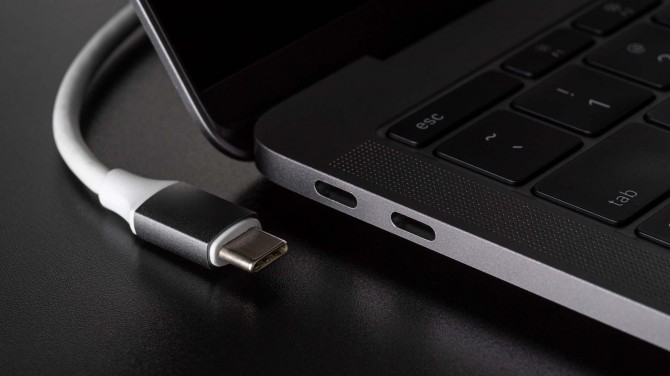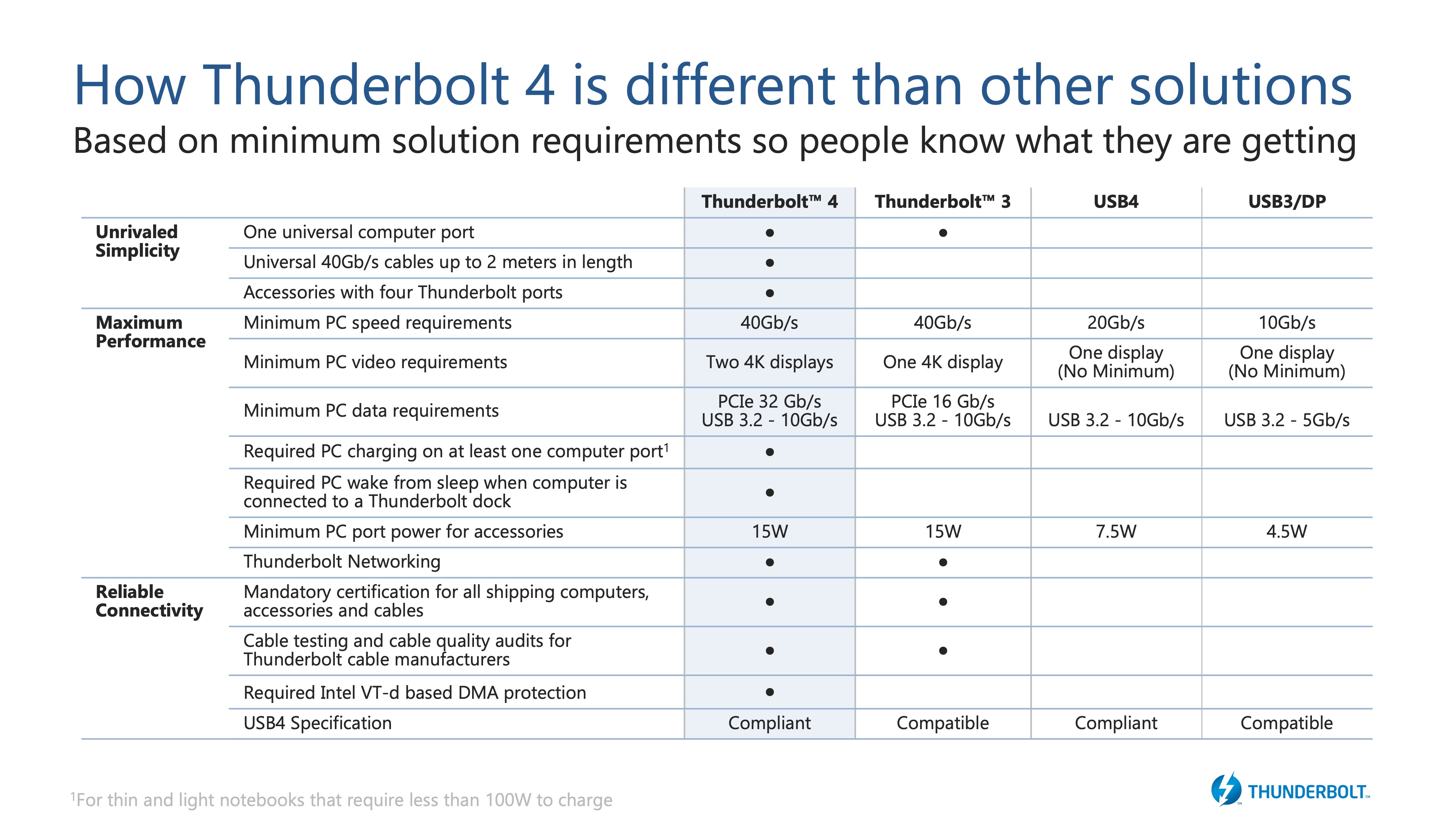Thunderbolt 4 specs revealed: What it means for upcoming laptops
Thunderbolt 4 will arrive on Tiger Lake-powered laptops later this year

Thunderbolt 4 is coming later this year, and we now know what to expect from the multi-purpose USB-C standard. Intel today revealed more information about Thunderbolt 4, giving us a better picture of its specs when it arrives on laptops in the coming months.
As a reminder, Thunderbolt is considered a "universal" solution because it's capable of delivering fast transfer speeds, charging and video output over a single connection. Thunderbolt 4 is compliant with USB4, DisplayPort and PCIe Express standards, and is compatible with previous-gen Thunderbolt and USB products.
- USB4 Is Coming: Here's How Fast It'll Be
- USB-C Cable Types: Everything You Need to Know
- The best USB Type-C hubs in 2020
Thunderbolt 4 speeds and features
Thunderbolt 4 isn't any faster than Thunderbolt 3 when it comes to maximum transfer speeds but it brings additional capabilities. Among those is the ability to connect to two 4K monitors or a single 8K monitor as a minimum requirement, an upgrade from the single 4K output offered by Thunderbolt 3.
Maximum data transfer speeds remain at 40GBps but can now be achieved using a 2-meter universal cable. For comparison, USB4 matches Thunderbolt at 40GBps but has a minimum requirement of 20GBps. Additionally, Thunderbolt 4 will introduce accessories with up to four Thunderbolt ports.

These upgraded minimum requirements will appeal to power users in the short term but Thunderbolt 4 also brings some added features everyone can enjoy. For example, Intel is requiring one Thunderbolt 4 port to drive power to thin and lightweight laptops that need less than 100 watts to charge. PCs will also need to let you wake them from sleep by touching a mouse or keyboard when they are connected to a Thunderbolt dock.
“Thunderbolt provides consumers with a leading connectivity standard across a range of devices, helping to advance computing experiences and delivering on the promise of USB-C with simplicity, performance and reliability," said Jason Ziller, general manager of Client Connectivity at Intel. "The arrival of Thunderbolt 4 underscores how Intel is advancing the PC ecosystem toward truly universal connectivity solutions.”
Thunderbolt 4 security
Earlier this year we learned why Surface laptops and tablets don't have Thunderbolt 3 ports. The reason? Because it is a direct memory access port that, if compromised, would give attackers entry to an entire system.
Sign up to receive The Snapshot, a free special dispatch from Laptop Mag, in your inbox.
Intel wants to reassure you (and Microsoft) that Thunderbolt 4 is secure by requiring Virtualization Technology for Directed I/O (VT-d). The company claims VT-d can prevent physical direct memory access (DMA) attacks by blocking PCIe peripherals (storage, external graphics, memory cards, etc) from unauthorized access to memory.
This is achieved using DMA remapping (DMA-r), which creates an isolated memory region for every device you connect to a system so they can only access assigned memory, not memory from the entire machine. VT-d was recommended on PCs with Thunderbolt 3 ports but is now required on those with Thunderbolt 4.
When is Thunderbolt 4 coming to laptops?
Intel will release the first Thunderbolt 4 controllers sometime in 2020 (a specific date was not provided). The first laptops with the port will be powered by Intel Tiger Lake CPUs, which are expected to introduce the much-anticipated integrated Intel Xe graphics.
You can expect Thunderbolt 4 to slowly find its way onto new products once Tiger Lake is available, and for widespread adoption to happen in 2021.
Phillip Tracy is the assistant managing editor at Laptop Mag where he reviews laptops, phones and other gadgets while covering the latest industry news. After graduating with a journalism degree from the University of Texas at Austin, Phillip became a tech reporter at the Daily Dot. There, he wrote reviews for a range of gadgets and covered everything from social media trends to cybersecurity. Prior to that, he wrote for RCR Wireless News covering 5G and IoT. When he's not tinkering with devices, you can find Phillip playing video games, reading, traveling or watching soccer.

